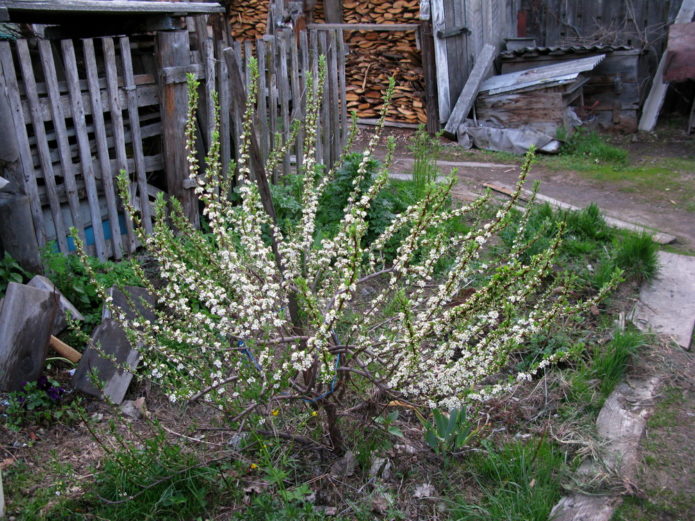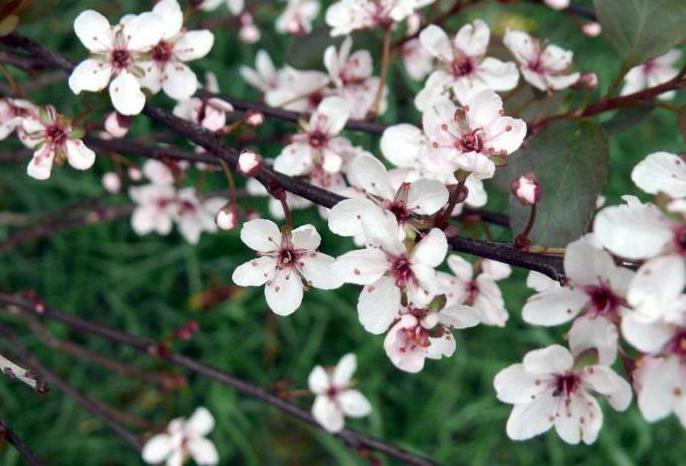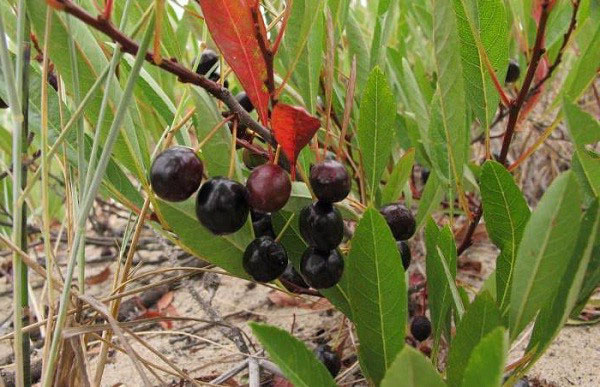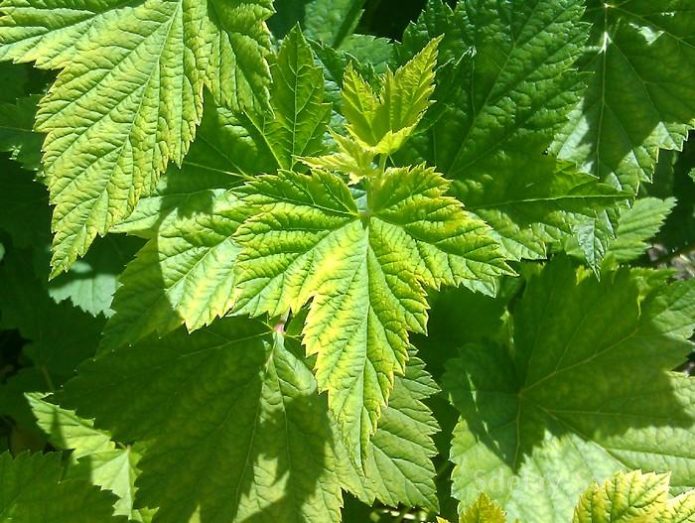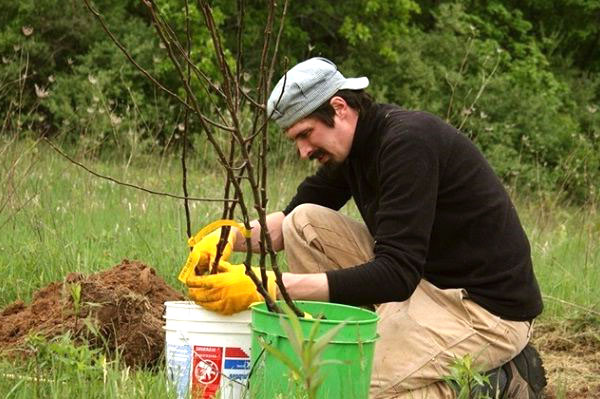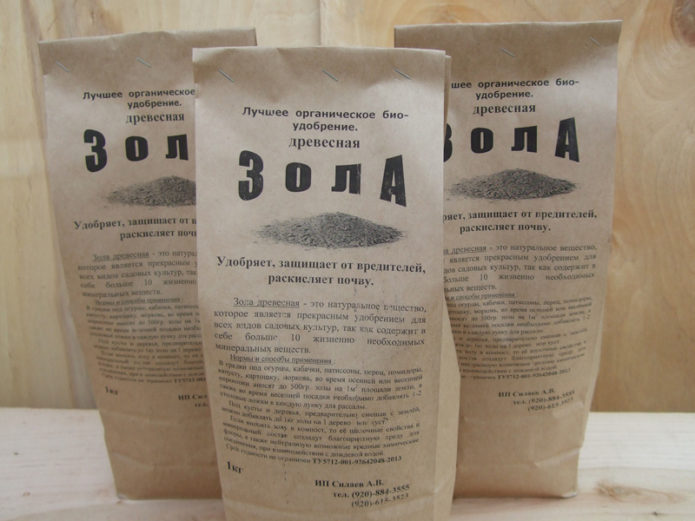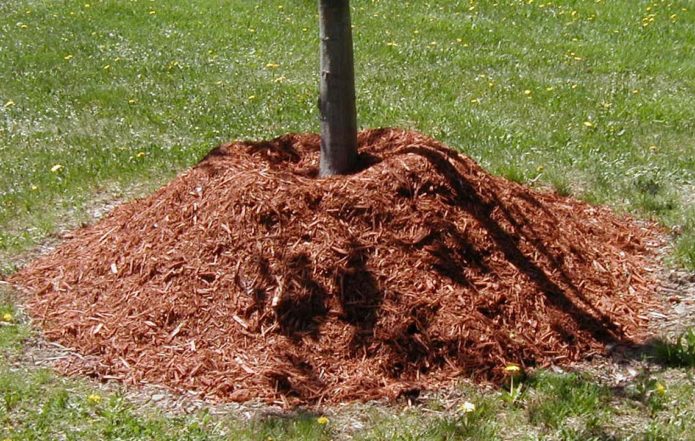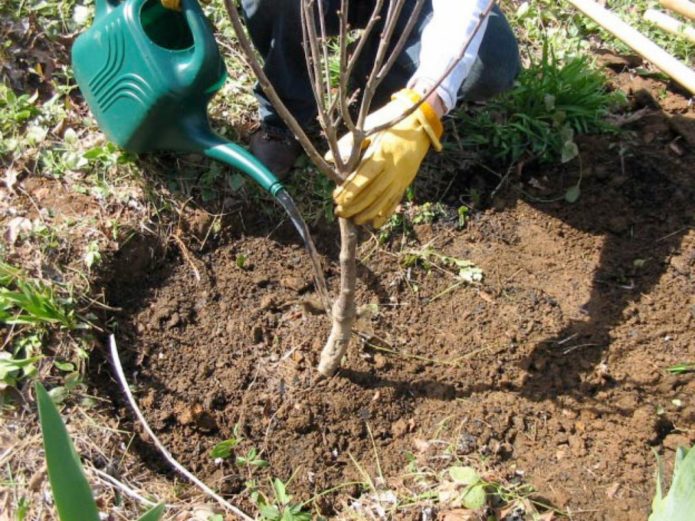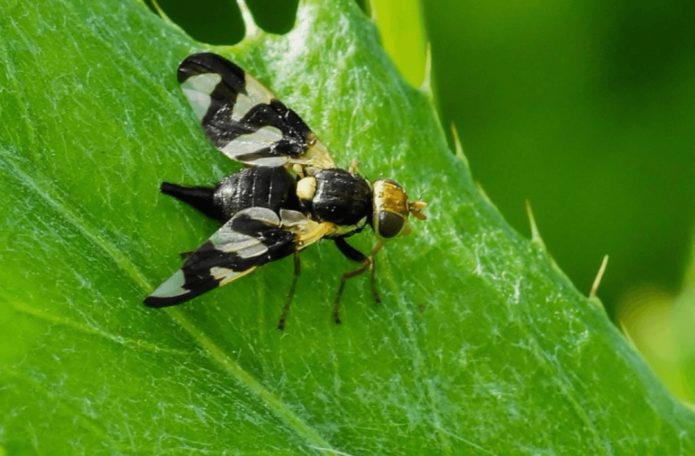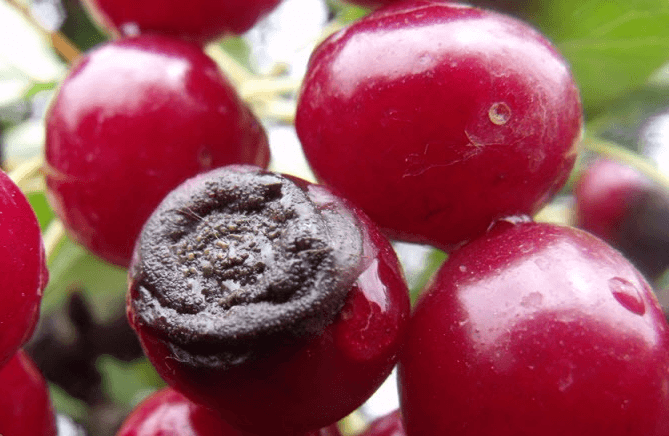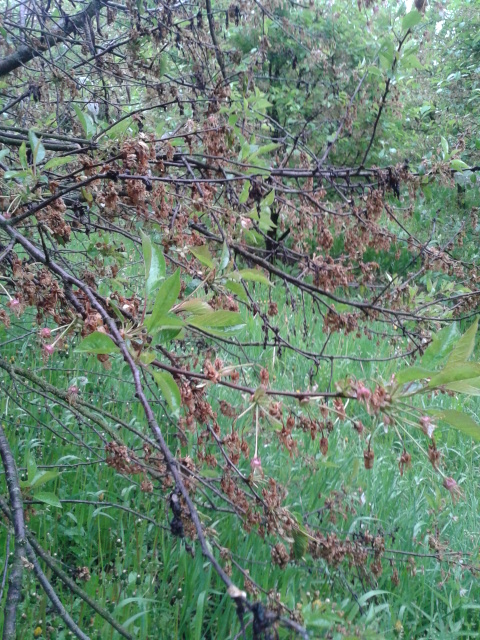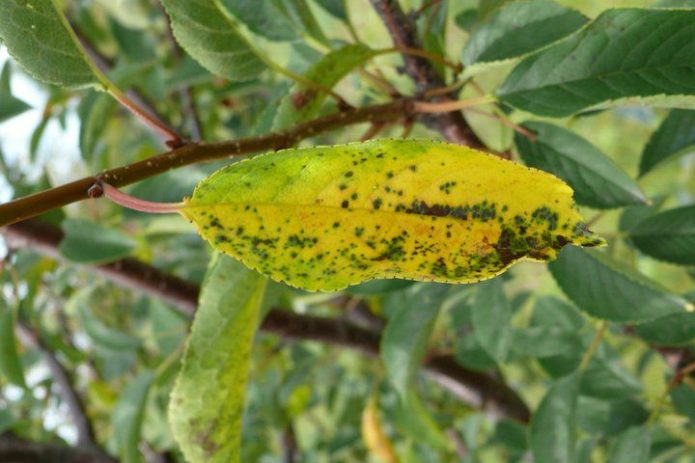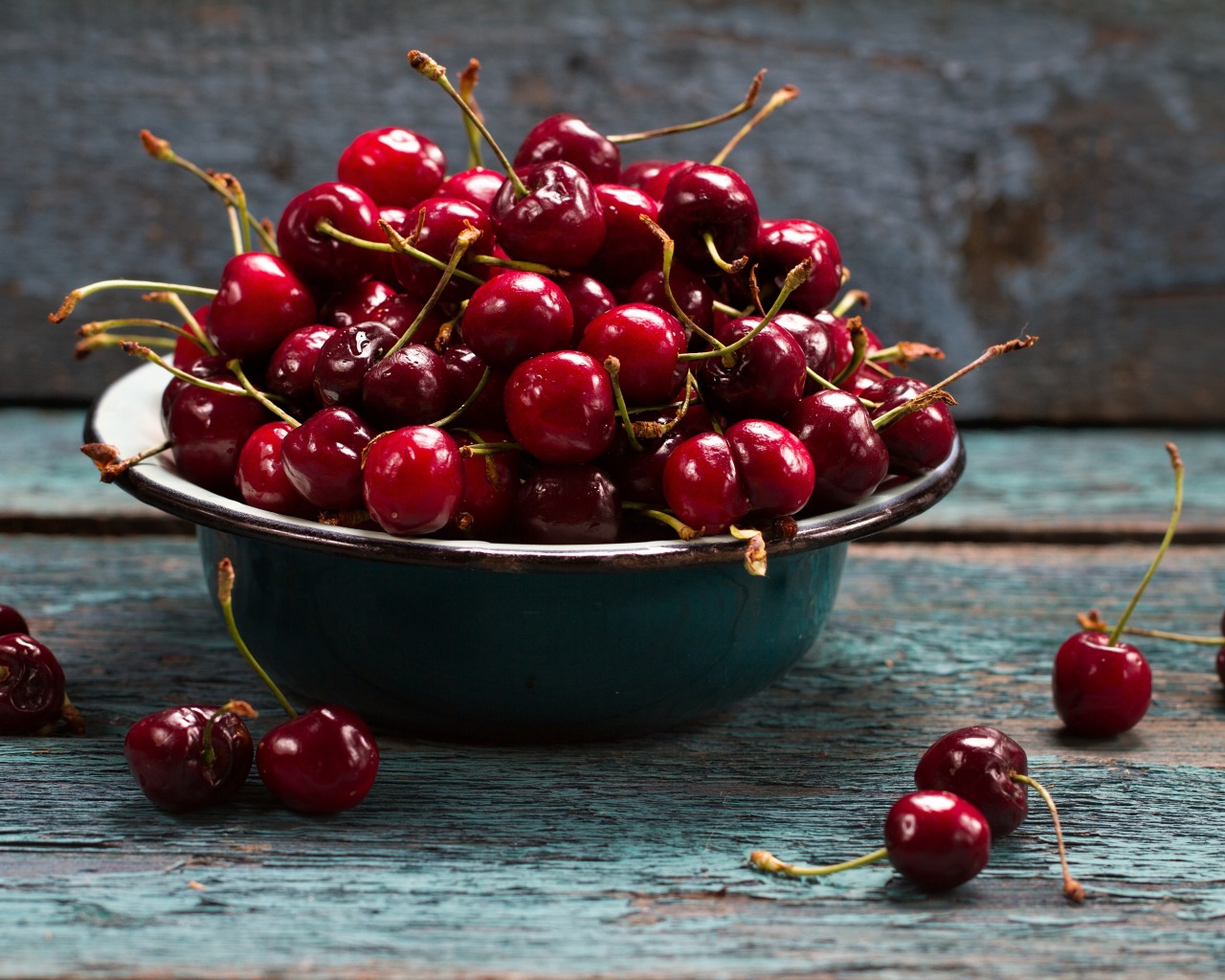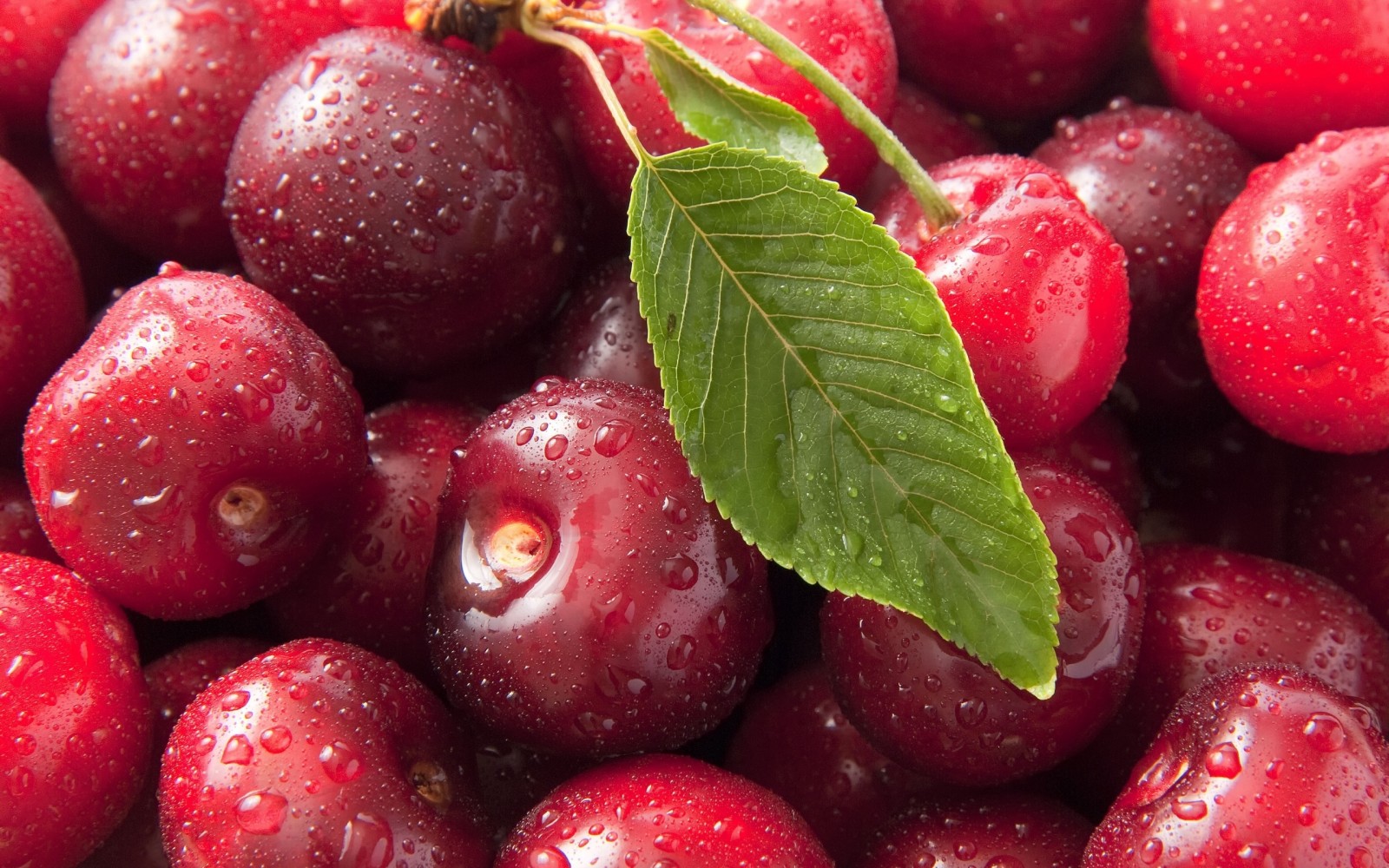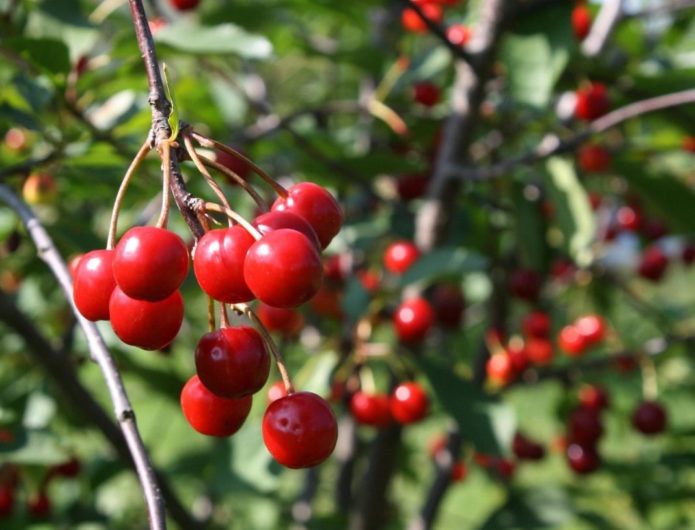Cherry varieties Besseya have excellent decorative properties and bring rich harvests of delicious berries. It is widespread in Russia due to its unpretentiousness and excellent frost resistance. Care and planting have their own characteristics that must be taken into account when growing an unusual variety.
Content
History of origin
The Bessey cherry is a relative of the sand cherry found in the Americas. It is very beautiful and has excellent decorative qualities, but its fruits are small and tasteless. However, thanks to the work of the American botanist Charles Edwin Bessie, the sand cherry was improved, as a result of which a new variety was born, which received the name of its creator. The variety is popularly called the American creeping cherry. The Bessey variety has fully retained the decorative properties of its ancestor, and also acquired delicious berries.
For the first time in Russia, this variety appeared in the Far East, from where it spread throughout the country. Soviet scientists, including I.V. Michurin, carried out breeding work in order to improve the taste of cherries.
Description of the variety
Bessei's height is from 70 to 150 cm, therefore this cherry is classified as a dwarf one. The shrub has many trunks and a spreading crown. In the first years of life, elastic red-brown branches stand straight, and after 7 years they begin to creep along the ground, acquire a black-gray tint.
Leaves and flowers
The elongated leaves are similar to willow. They are painted green with silver dusting. In autumn, the leaves change color to a spectacular red. In spring, small delicate flowers of a snow-white, and sometimes light pink shade with bright scarlet stamens bloom on the bushes. Flowering begins two weeks later than the common cherry varieties and lasts 17–20 days. This usually happens in May - early June. Flowers are bisexual. At this time, Besseya seems to be the real queen of the garden, so the plant has decorative value and can be used in landscape design.
Besseya is made part of group plantings or planted alone, decorating the rocky and sandy areas of the garden, as well as creating hedges.
Yield
The variety is partially self-fertile, for a rich harvest it needs a pollinator neighbor of a different shape - for example, with fruits of a dark or yellow hue. Remember that ordinary or steppe cherries, sweet cherries are not suitable for this purpose.
The harvest ripens by mid-August. A young plant begins to bear fruit as early as the second year after planting. However, after 14 years, the yield decreases.
Berries of an oval or elongated shape are colored dark brown or black, reaching a weight of 1.5 to 2.5 g. Juicy pulp is greenish in color. The taste of the fruits is tart, sweet, without a sour aftertaste, reminiscent of black chokeberry or bird cherry. Tasting score - 3.7 points out of 5.
Depending on the habitat, age and care conditions, the Bessey bush gives from 3 to 10 kg of fruit per season.
Growing features
Besseya belongs to varieties that tolerate winter frosts and summer drought well. Despite this, in severe winters or during spring thaws, some branches may freeze or dry out. Shoots under the snow produce good yields.
Choosing a place and time of boarding
In the spring, it is recommended to plant plants with an open root system so that the bushes have time to adapt and prepare for winter. Seedlings with a closed root system (in a container) are more resilient and strong, so they can be planted in the garden in summer or early fall. In the middle of autumn, you should not plant, the bushes need to be dug in, and planted with the arrival of spring.
When choosing a landing site, you need to follow a number of rules:
- Bessya brings a rich harvest only in a sunny place;
- do not plant shrubs in low areas or where groundwater flows close to the surface. High humidity leads to root rot;
- cherries are best placed on a mound to prevent waterlogging and podoprevanie;
- place cherries 2 meters away from other plants;
- if the soil is too heavy, build a drainage system using rubble, pebbles or expanded clay;
- clay soil is diluted with sand;
- lime is added to the acidic soil.
Besseya does not tolerate acidic soil. When choosing a place, you can perform an acidity test, which was known to our grandmothers. In a glass of boiling water, insist 5 black currant leaves for 10 minutes. Then remove the leaves and place the soil from the selected area there. If the liquid turns red, the soil is acidic, if it turns green, it is slightly acidic, and blue, neutral.
Planting process
A place for cherries must be prepared in advance.
- 1-2 weeks before the process, they dig a hole into which drainage (crushed stone or pebbles) is poured.
- If the soil is acidic, add dolomite flour. It also serves as a fertilizer.
- Sand is poured into the soil, which is mixed with the ground.
- Then fertilizers are added: 800 g of superphosphate, 200 g of ash and 2 buckets of humus. The resulting mixture is well mixed until a homogeneous mass is formed and a small mound is built.
- When the soil settles, a plant is planted: they put the seedling on a mound, correct the root system and cover it with earth.
- At the end, the bush is poured with water with the addition of mineral fertilizer, diluted according to the instructions.
Care
The variety is characterized by relative unpretentiousness. Even a beginner can grow sweet Besseya. It requires the same maintenance procedures as regular cherries.
Rejuvenation
Adult crops need regular rejuvenation, which consists in timely pruning. Get rid of useless branches that bring little harvest, weak, thin branches. It is also necessary to remove branches that are more than 7 years old. They tend to the ground and bear little fruit. If the shoots dry out, you can cut the entire tree at the root, leaving only a stump. Soon, new young shoots will appear on it. Too dense crown is thinned out in spring.
Pruning prevents some branches from being shaded by others.
Top dressing
Besseya responds well to potash fertilizers. Fertilizers containing nitrogen are required in case of slow growth of the crop. It is better not to feed a healthy tree with nitrogen at all.Cherries are fertilized with wood ash or special solutions sold in stores. Use foliar dressing, spraying the plant 3 times during the growing season.
Preparing for winter
Besseya tolerates winter frosts well, but she still needs to be prepared for a difficult time. If several unfavorable factors affect the plant at the same time, it may not survive until next spring. Preparation begins with mulching the ground next to the shrub. Then, at a height of 30 cm from the ground, you need to attach strips under which the branches covered with a special material will fit. If the bush is completely covered with snow, remove it only around the plant, without exposing the branches. Shoots that have spent the winter under the snow bear fruit much better.
Watering
Excessive moisture and stagnant water are more dangerous than diseases and parasites. To avoid root decay, water the plant sparingly (3-4 times per season) and create a good drainage system.
After each watering, loosen the soil without touching the root shoots.
Diseases and pests
In Russia, Besseya is attacked by a cherry fly. This insect is active in the spring. As a result of the fly's activity, the berries become smaller and stained. To avoid damaging the shrub, it is sprayed with insect repellent.
Sometimes cherries can be affected by anthracnose. Symptoms are expressed in the appearance of dark spots of a matte shade with a slimy coating. Preventive measures include spraying with 1% Bordeaux liquid. Infected fruits are removed and destroyed.
Of the fungal diseases, monilial burn is common. It occurs during the flowering period in wet weather. The fungus makes its way into the fruit through the stamens, causing drying out. The diseased areas are cut off and burned. As a preventive measure, gardeners spray the shrub with Bayleton or Horus at the beginning of flowering.
Besseya can get coccomycosis. In this case, brown spots appear on the leaves, and a bloom of pink or white appears on the reverse side. They fight the disease with the help of Topsin, Skor or Delan. The first time they are sprayed at the end of flowering, then every 2 weeks.
Reproduction
Besseya is propagated using seeds and cuttings. Sometimes you can resort to seed propagation, but this is not a common method, since varietal qualities can be lost.
- Cuttings. In June, planting material is harvested by cutting cuttings. Leaves are removed from the shoots, a cut is made, the cutting is placed in water, and then in a special stimulating fertilizer. The land for filling the pots is collected in the forest. The planting material is seated in containers, covered with a jar, forming a greenhouse environment, and placed in the shade. A month later, after the roots appear, the banks are removed, and the cuttings continue to grow.
You cannot put pots with cuttings in the sun, in such conditions they will suffocate and die.
- Seeds. The planting material is extracted from the berries, poured into moistened sawdust and placed in a dark and cool place. Seeds are stored only in metal or glass containers. Seeds are planted in open ground in April or October.
Hybrids involving varieties
The Bessey variety is a related crop of the plum. If you cross these plants, you get high yielding hybrids. They are very much appreciated by gardeners, so breeders do not shy away from such experiments, knowing that crossed crops have a great perspective. Plum-cherry hybrids grow up to 2 m and bear fruit in the second year after planting.At first, the harvests are not very rich, but every year the number of fruits increases. The berries are small, weighing from 15 to 25 g. The taste of the fruit is very pleasant, although it looks more like a plum.

From the seeds of the plum-cherry hybrid, a seedling grows with the varietal characteristics of one of the parents
A distance of 2.5 m is observed between the hybrids. Several varieties of plum-cherry hybrids are planted at once in order to obtain a crop as a result of pollination (the hybrids are self-infertile). The Bessey cherry bush can also act as a pollinator. The hybrid culture is propagated by horizontal layers, tilting the lower branch of the shrub to the ground. Most often, a seedling grows from the seeds, which has the sign of one of the parents, that is, a cherry or plum. Currently, breeders are trying to breed Bessey hybrids with apricot and cherry plum.
Collection and storage of fruits
The variety has an interesting feature that attracts gardeners with its convenience: ripe fruits do not fall off, but remain on the branch. As a result, under the influence of the sun, astringency disappears from them, which makes the taste even more piquant. The fruits can lie for 10 days in a cool place. Store only fresh and healthy cherries. Berries that are injured or begin to rot will quickly deteriorate and damage the rest of the crop. The fruits are frozen or dried, compotes, juices, preserves, jams, wine are prepared.
Video about Bessey's cherry
Variety reviews
As a rootstock, yes, very good. For SVG, the pollinator is also good, for late flowering plums it is also suitable, different cherries will be pollinated by gerbils. There are people who like Besseya because of the bird cherry flavor, even many are planted on compote. I have been growing in one hole for a long time.
The year before last I bought Bessey's cherries by mail. While the package was in progress, it was November, it was already snowing. On the advice from the letter attached to the parcel, I dug the seedlings in an almost horizontal position. It so happened that last year, for some reason, I could not get to the dacha and there was no one to instruct. Arriving this year, I found that all the seedlings are alive, blooming and nothing terrible has happened to them, only Bessey's cherry has released many new branches, which are not parallel to the stem, but strictly perpendicular.
Astringent. They told me that it was so sweet, already horror. Well, in the second year I gave 10 pieces of berries, tasteless. Last year it was already strewn, but tart. Grow further or dig it out, I just don't know.
Bessey's cherry came to us from a distant country, but quickly won the hearts of gardeners thanks to its delicious berries and the beauty of shrubs. Unpretentiousness allows you to grow the variety in any region of the country. If you feel like experimenting, you can create a cherry-plum hybrid.

